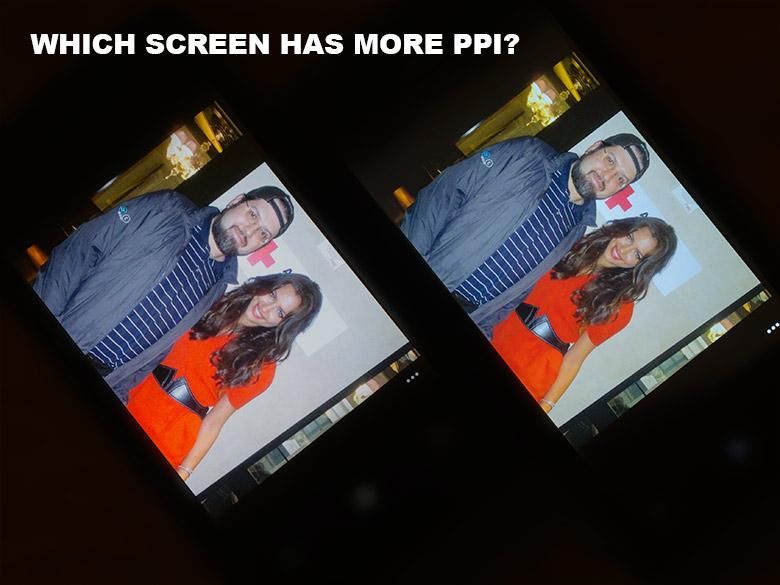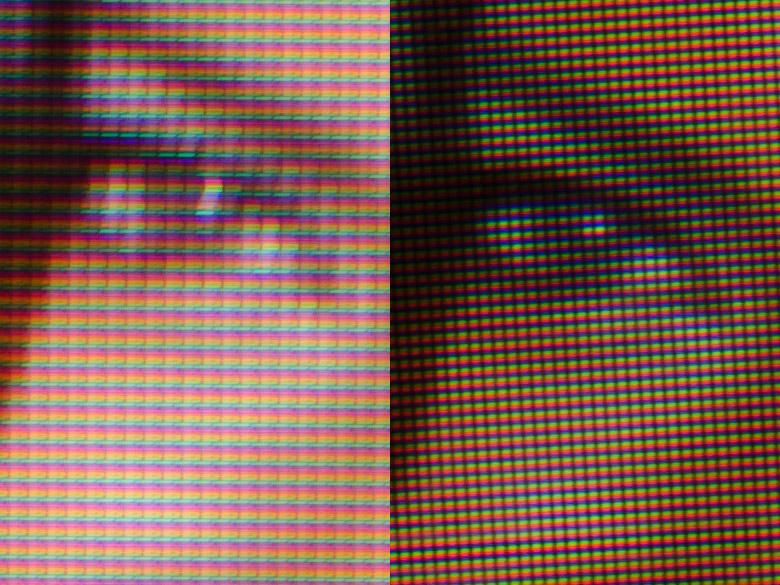All screens these days are made of colored pixels and the smaller the pixels, the more detail you can get into a screen of the same physical dimensions. This pixel density measurement is usually referred to as PPI or pixels per inch. The higher the PPI, the more detail you'll find within the image.
Digital PPI measurements often translate to DPI for print or "dots per inch". Offset printing generally requires a 300 DPI resolution for optimum image quality and type smoothness though sometimes 266 DPI is used as well. You'll see this resolution used in magazines, books, and posters with glossy color prints. For the most part people never notice the individual dots at this resolution unless you look at them with a magnifying lens.
Newspapers usually use a much lower resolution at around 170 DPI. Even though those are held at about the same distance as a magazine, the lower resolution is still perfectly readable. Billboards are printed at about 10-20 dots per inch, but from a distance your eyes can't really tell, so it's still totally readable.
Mobile phones and tablets are generally viewed at about the same distance as a newspaper or magazine, so the 150-300 dpi range makes sense. Of course, the physical dimensions of your screen affects the pixel density. A 4.5' screen (2.313' x 3.855') with a 768 x 1280 pixel screen has an extremely high resolution 332 dots per inch. A 10' screen with the same number of pixels still gives you 150 dots per inch, which is about the same as a newspaper. That means you can still read type, make out pictures, and discern color differences.
Now can you tell which screen has more pixels per inch?
Does that difference in pixel density help you type emails more effectively? Are you unable to recognize letters and words if they are composed of slightly larger pixels? Are colors and tones unrecognizable at 200 dots per inch? Does the high resolution screen help you navigate to appointments, manage your calendar, organize your contacts, or collaborate on projects? Does it help you do any of that while keeping your eyes on the road when driving?
Yes, 300 dots per inch gives you more clarity and detail, but how often is that important? It's good for watching movies, right? That's something very few people use their phones for. It's good for looking at pictures. Yes, that's popular, but it's not like a photo is completely unrecognizable at 150 dpi, and if you want to check on more detail all you have to do is zoom in. Is it good for viewing websites? Not really, since websites are all designed for the standard screen resolution of 72 dpi, a 300 dpi screen will make all of the graphics extremely small and unreadable thus forcing you to zoom in on the pixels (in images) anyway.
I know there are a lot of fans out there that are really into the screen resolutions on phones and tablets. I've tried bragging to friends about the screen quality when I've had the Nokia Lumia 920 with me, but that was generally met with a "who cares as long as you can see it" response. They were much more interested in things like wireless charging and kid's corner. So to me, it feels like bragging about your high resolution screen is like bragging about a digital backlit speedometer in your car. Sure, it might be easier to read or whatnot, but does it have any real functional advantage?
On the other hand…
On the other hand, the resolution or resolving power of a perfect 20/20 human eye is about 0.2 millimeters at its closest focusing distance. At about 10', this translates to a resolution of about 700 pixels per inch as the resolution of the eye at one arc-minute. Increasing that distance to about 20' and the perceptible resolution reduces to around 533 pixels per inch. This resolving power decreases with an increase in distance or a decrease in angular resolution. In other words, your eye's ability to perceive detail diminishes depending on the distance from the object. It also diminishes based on plenty of other variables such as iris diameter, light levels, light wavelengths, etc. In the 10-20 inch range where most people tend to hold and view their smartphones, technically the screen won't be sharper than it needs to be until you get to the 500 pixels per inch range.


